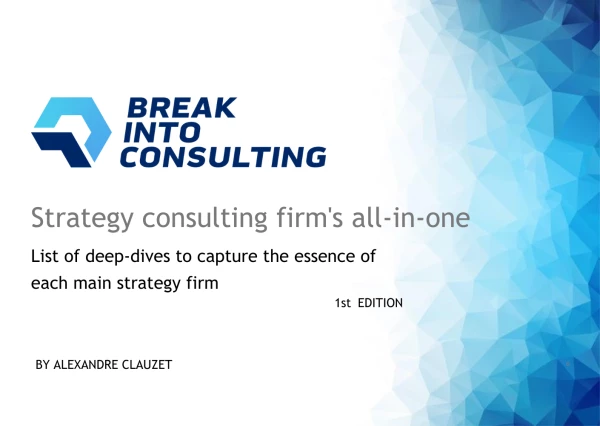In many consulting case guides it is suggested to take some time at the beginning of the case to "lay down a structure". Could you please make some practical examples?
Furthermore, I would like to know your thoughts about creating a structure at the beginning of the case vs not taking time at the beginning but structuring the analysis during the case resolution











